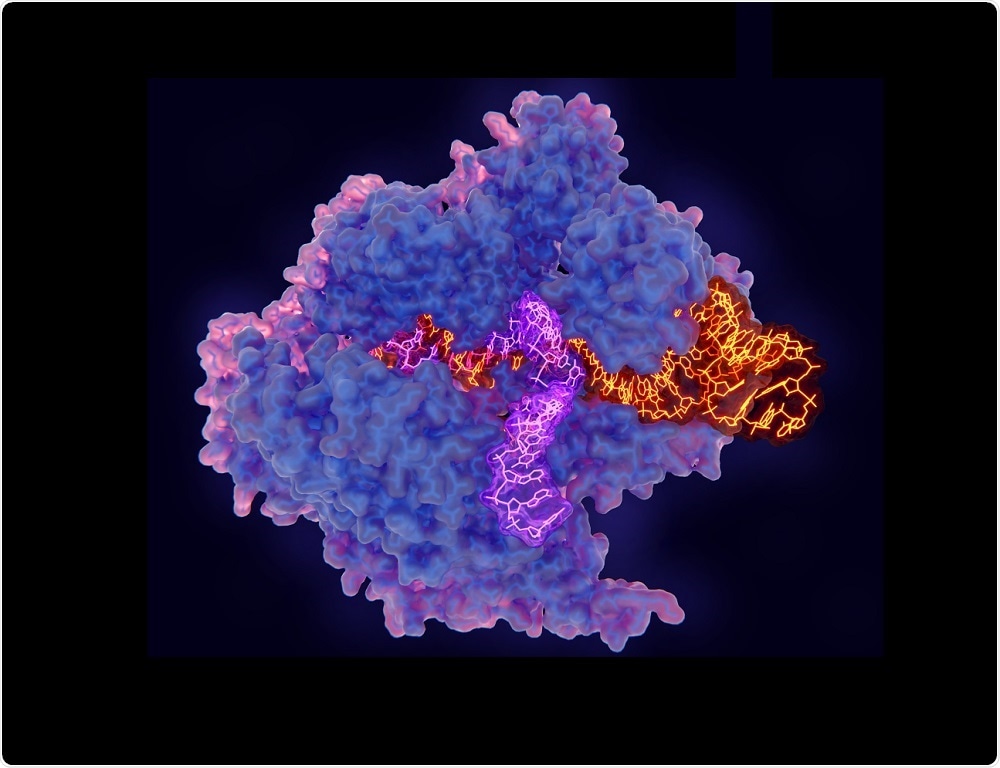Genomics experts are finding new ways to improve the use of the enzyme Cas9 for CRISPR gene-editing to reduce the likelihood of off-target mutations. The research, which addresses concerns about off-target mutagenesis and identifies new ways to improve precision, was recently presented at the American Society of Human Genetics 2019 Annual Meeting in Houston.
 Juan Gaertner / Shutterstock.com
Juan Gaertner / Shutterstock.com
What is Cas9?
Genome or gene editing enables scientists to alter an organism’s DNA by adding, removing or changing genetic material at specific locations in the genome. One of the more recent gene-editing technologies used in the laboratory is CRISPR-Cas9.
Researchers create a piece of RNA with a short “guide” sequence that recognizes and binds to a specific target DNA sequence. The guide RNA also binds to the enzyme Cas9, which, in turn, binds to the target DNA and cuts it at the intended location. Once the DNA is cut, researchers can add or delete genetic material or make changes to it by replacing a DNA segment with a customized DNA sequence.
Lauryl Nutter, Associate Director at The Centre for Phenogenomics in Toronto and collaborators from the multi-institution Knockout Mouse Phenotyping Project (KOMP2) frequently use Cas9 gene editing to generate mouse lines with specific mutations.
While carrying out this gene editing process in the laboratory, they often wonder what the risk of off-target mutagenesis is – the introduction of unintended genetic mutations into their mouse lines.
"We wanted to know: to what extent do we need to worry about off-target mutagenesis?" says Nutter.
Improving human gene-editing
The team hoped that if they could determine the extent of the problem in mice, it would help them better evaluate the problem in human cell lines and lead to new ways to improve the accuracy of Cas9-based gene editing.
To investigate, Nutter and team carried out 58 genome editing experiments using Cas9 and guide RNAs to induce a specific, targeted gene mutation. Two to four guides were used in each experiment, which added up to a total of 175 different guide RNAs.
The researchers performed whole genome sequencing of each mouse to check for any mutations lying outside of their target.
To obtain a baseline mutation rate, the genomes of Cas9-treated mouse lines were compared with those of 25 untreated control mice. In 31 of the Cas9 mouse lines, no off-target mutations were identified, but an average of 2.3 such mutations were identified in the remaining 20 lines.
However, among both the Cas9-treated and untreated mouse lines, the team identified an average of 3,500 naturally occurring mutations in each animal.
Surprisingly, these results show that the number of naturally-occurring mutations far exceeded those introduced by Cas9. They also show that when guide RNAs are properly designed, off-target mutagenesis is quite rare."
Lauryl Nutter
The findings add context to the use of inbred lab mice
The findings strengthen understanding surrounding the use of inbred lab mice in genetics research and add context to the assumptions researchers have made while carrying out the experiments.
Historically, we have used inbred mouse lines to study genetics in mice because their genomes differed only at certain, defined places, and we've assumed that any difference between the mice is due to those differences. However, we found that even among mice in the same litter, there could be thousands of naturally-occurring genetic differences."
Lauryl Nutter
Nutter says the results underscore the need to be aware of using Cas9 and other tools in a genome that may not be as well defined as had previously been thought.
Next, the researchers plan to investigate whether enzymes that inhibit or enhance DNA repair can influence the rate at which new mutations occur. They also intend to assess the trade-off between enhancing the efficiency of Cas9 mutagenesis and improving its accuracy.
Nutter and team hope their findings will help lead to the development of better guide RNAs, as well as improved use of control groups and a more informed understanding of experimental design.
This improved knowledge would be especially relevant in gene editing research with potential therapeutic applications, including research into the safety and efficacy of genetics-based therapies, notes the team.